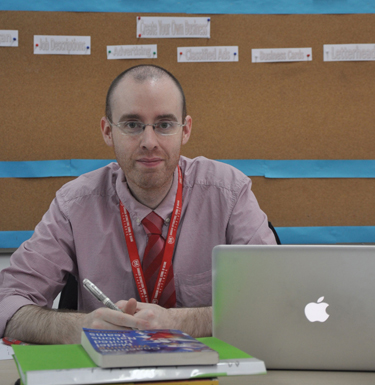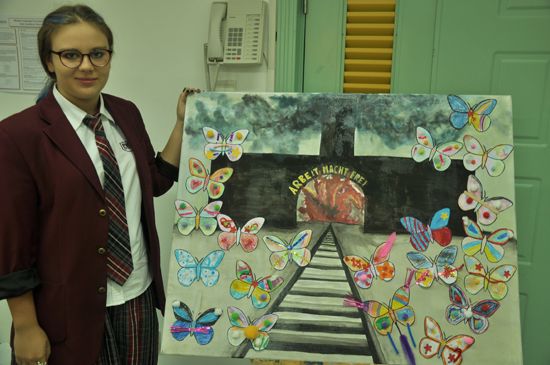
Gary Goodwin
At the Canadian International School of Beijing (CISB), Gary Goodwin’s students represent an especially vast range of nationalities and backgrounds. So it’s only fitting that he uses IWitness to teach not just the Holocaust, but also the Nanjing Massacre and Rwandan Tutsi Genocide.
Goodwin teaches 10th, 11th, and 12th grade humanities within CISB’s International Baccalaureate curriculum. He was inspired by Schindler’s List to get a master’s in history and from researching the movie discovered USC Shoah Foundation and IWitness.
During his 10th grade unit on the Holocaust, Goodwin assigns his students the book Holocaust: The Events and their Impact on Real People by Angela Gluck Wood in association with the USC Shoah Foundation. Students then research topics from the book in IWitness, such as “labor camps,” and take notes on clips they find. They provide an oral response to the class about what they have viewed and how that testimony added to their understanding of that particular aspect of Holocaust history.
They also take what they learn from IWitness and create a visual response to be included in a grade-wide Holocaust Memorial in Goodwin’s classroom.
Goodwin said he now plans to use the Rwandan Genocide testimonies in his class’s Model United Nations simulation of the Rwanda Security Council of 1994. He will also use Nanjing Massacre testimonies in his unit on the Chinese Civil War. Many students at CISB have been touched personally by the Nanjing Massacre and the Japanese occupation through stories of their grandparents, Goodwin said.
He has found IWitness to be engaging, user-friendly and easily adaptable to his course material.
Student reaction to testimony is always very powerful, he added.
“Many students cry or have questions which touch on aspects of the nature of humanity and good and evil,” Goodwin said. “Many students choose to go back to the same [testimony] for each section covered as they established a connection with a certain person and his or her testimony.”

“Zoe’s work is an inspiration to me as it reminds me each day of why I became a teacher,” Goodwin said.
Another student from Israel thanked Goodwin for teaching him about the Holocaust, since he had not learned about it in an international school before. He gave Goodwin a pen from the Israeli Embassy where his mother worked as a token of his family’s appreciation.
Goodwin said IWitness gives students access to relevant and powerful primary sources, which can improve students’ tolerance, empathy, and understanding.
“Often history seems very distant from the people that study it,” Goodwin said. “IWitness helps students see how acts of genocide affect people, family, communities, and nations. In an era of increased globalization, people must accept, appreciate, and celebrate differences.”